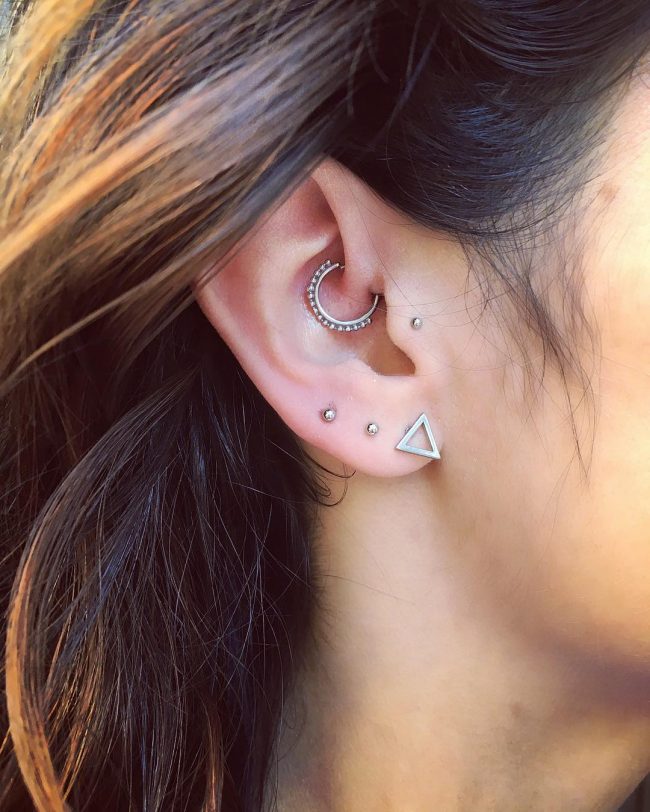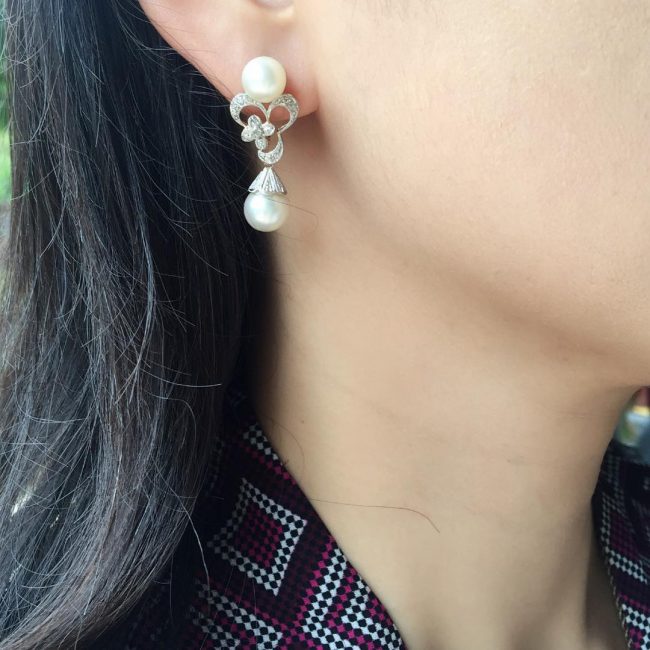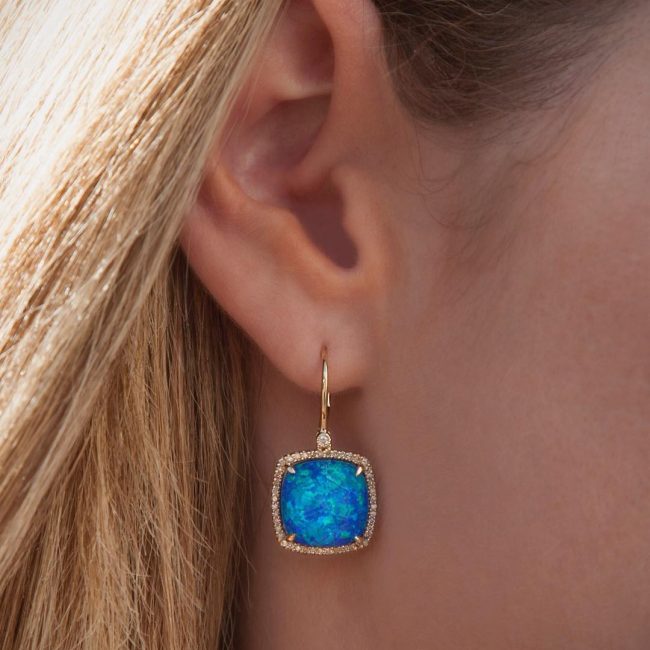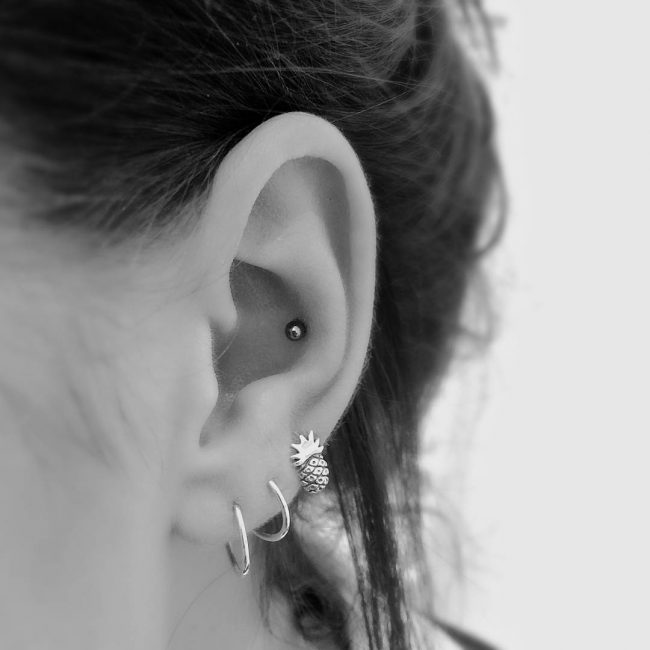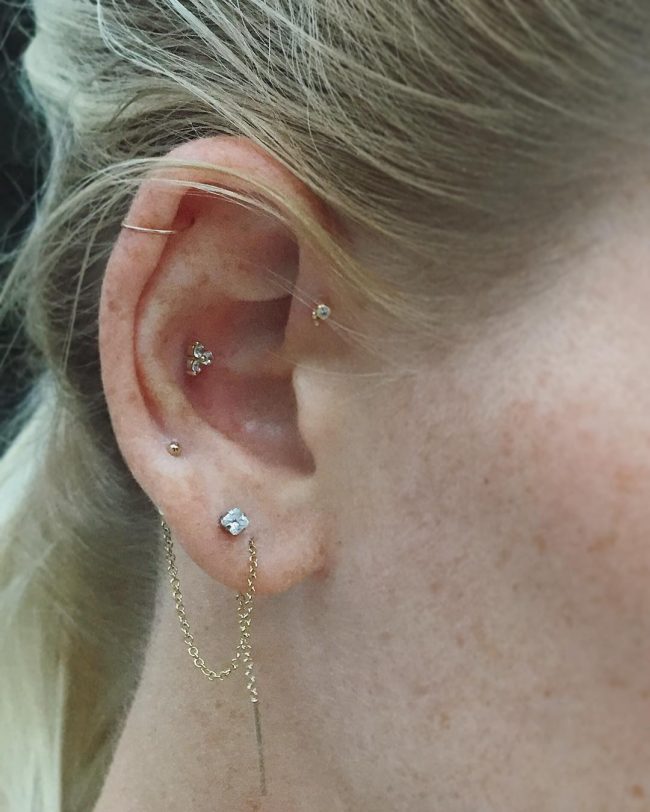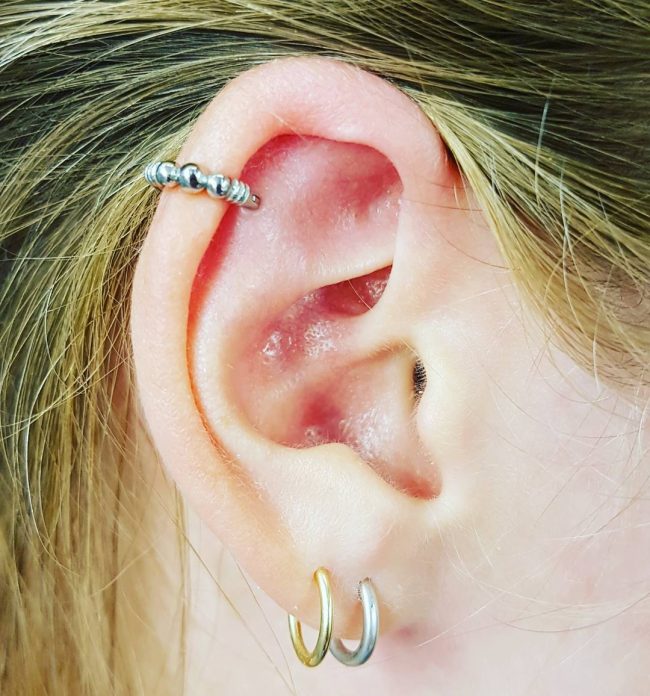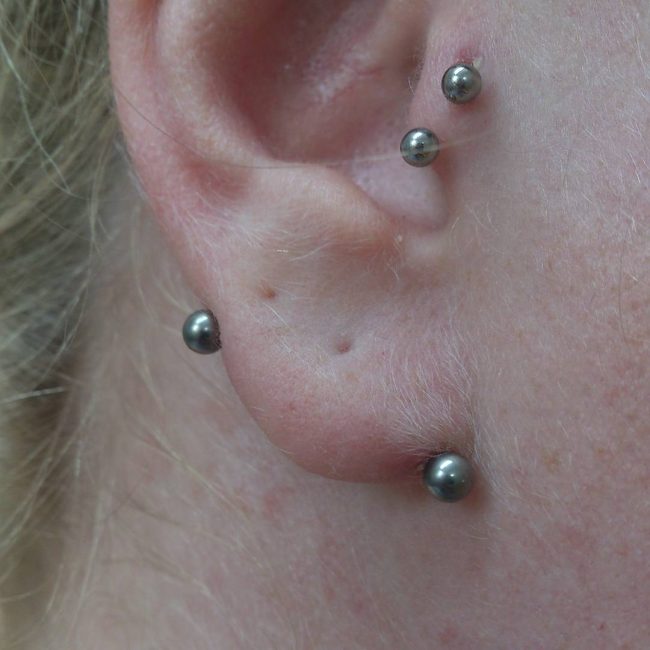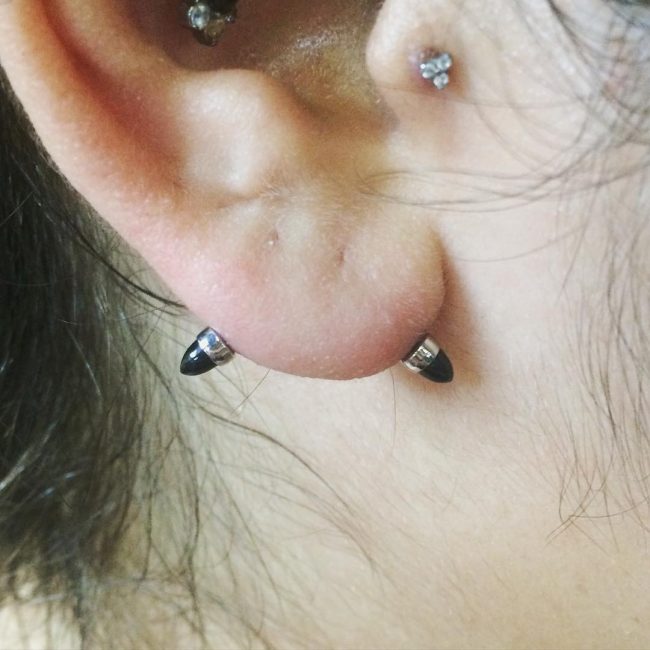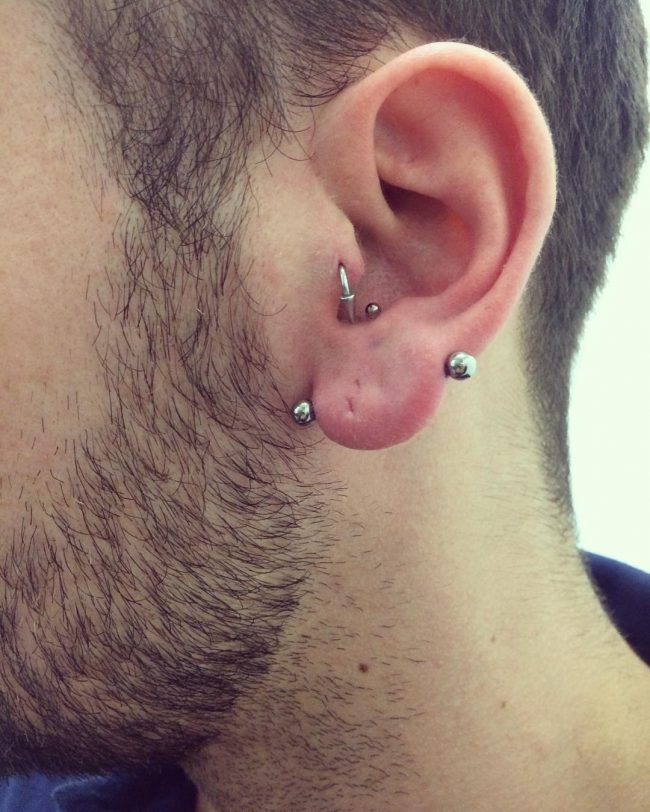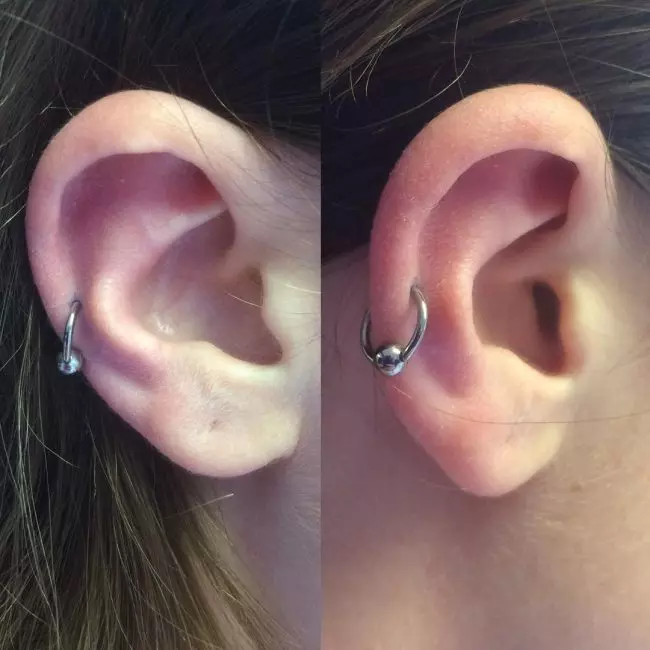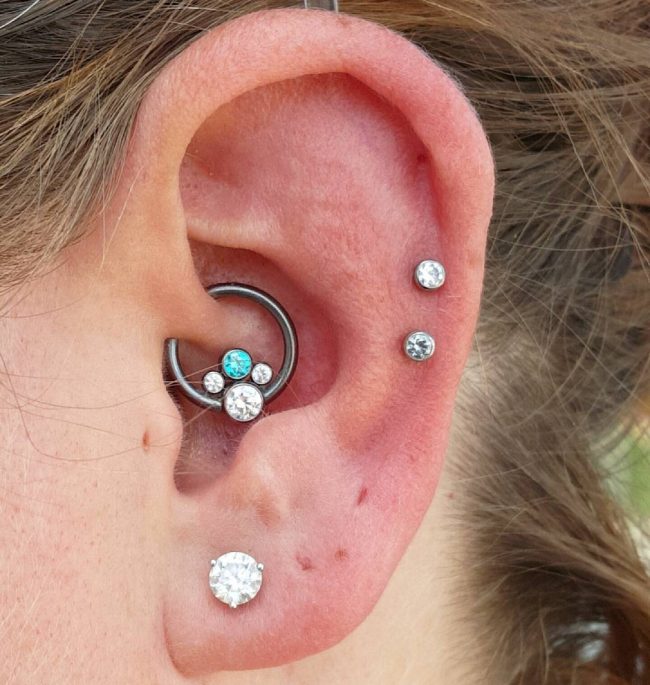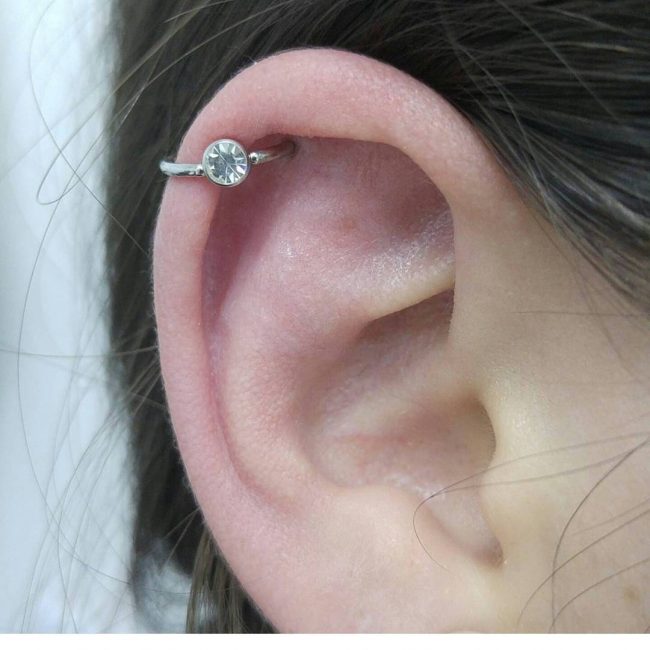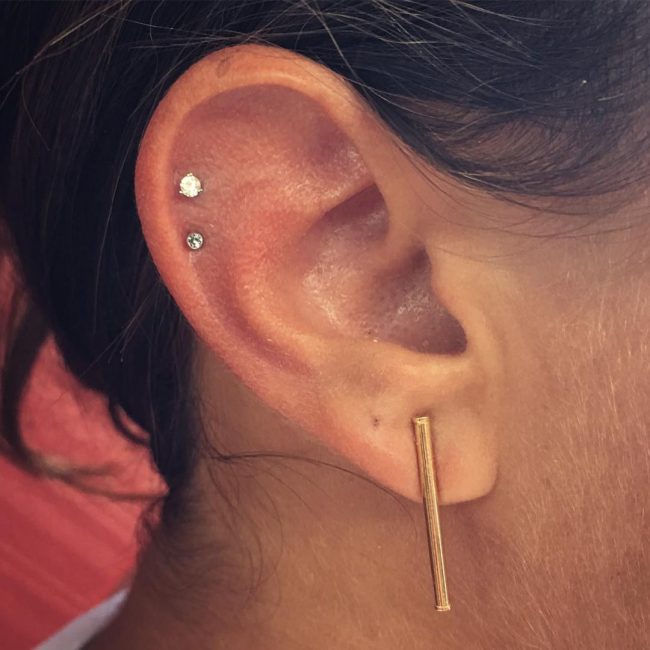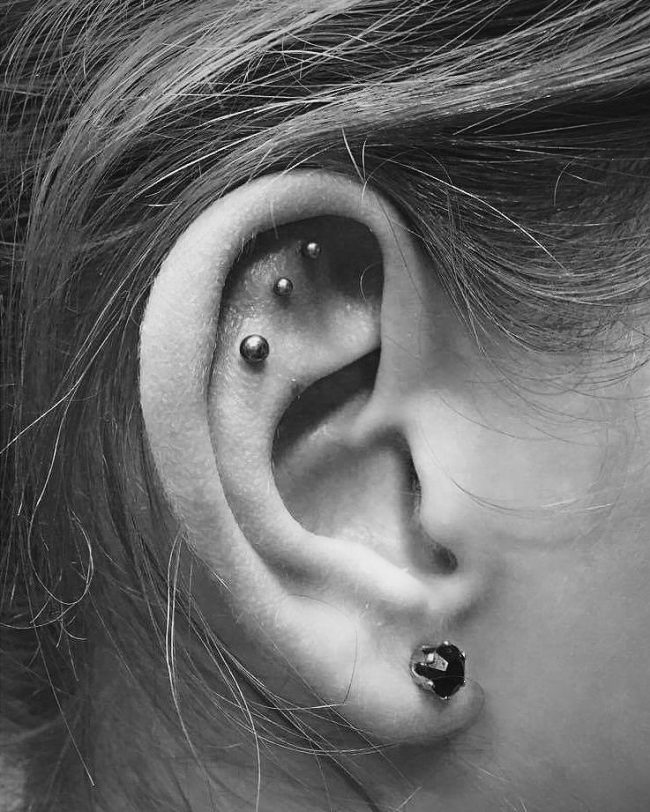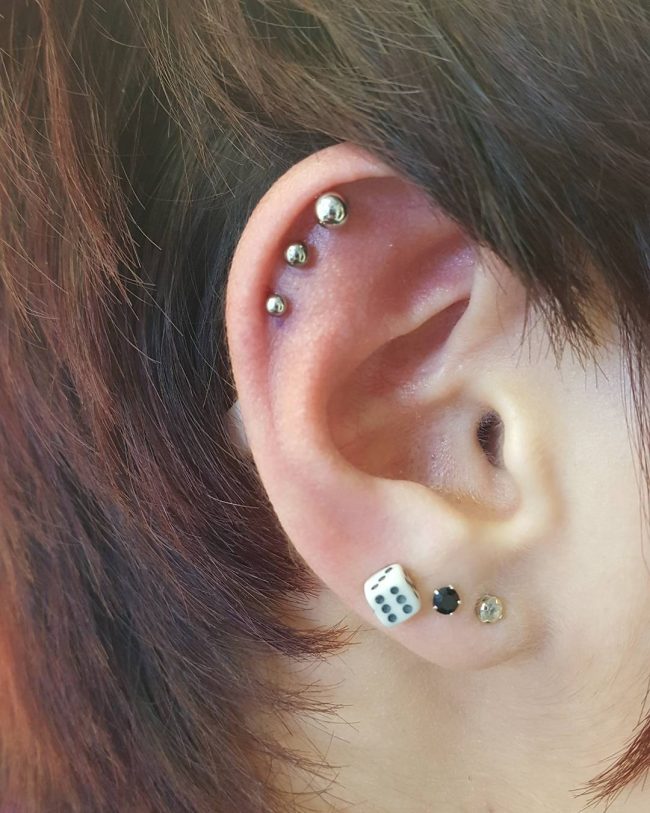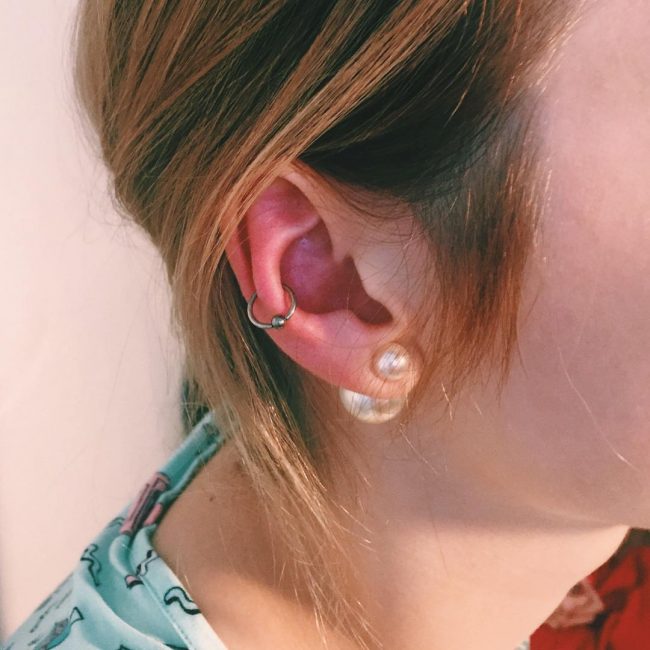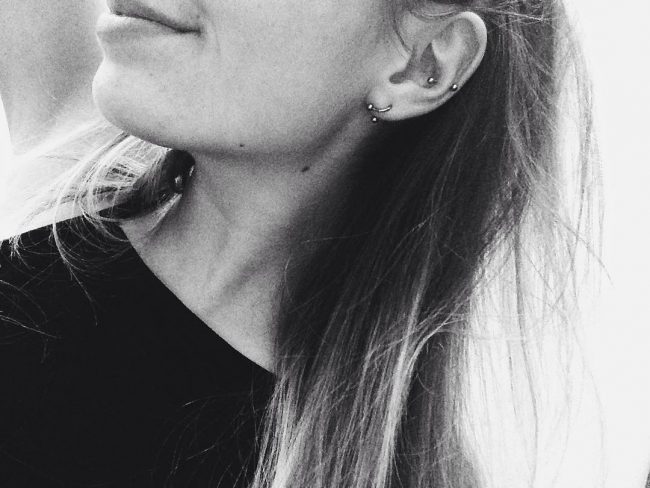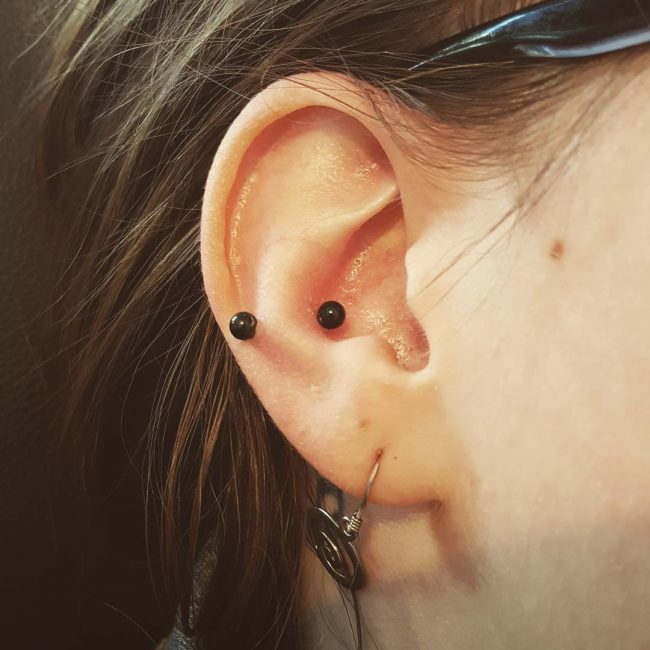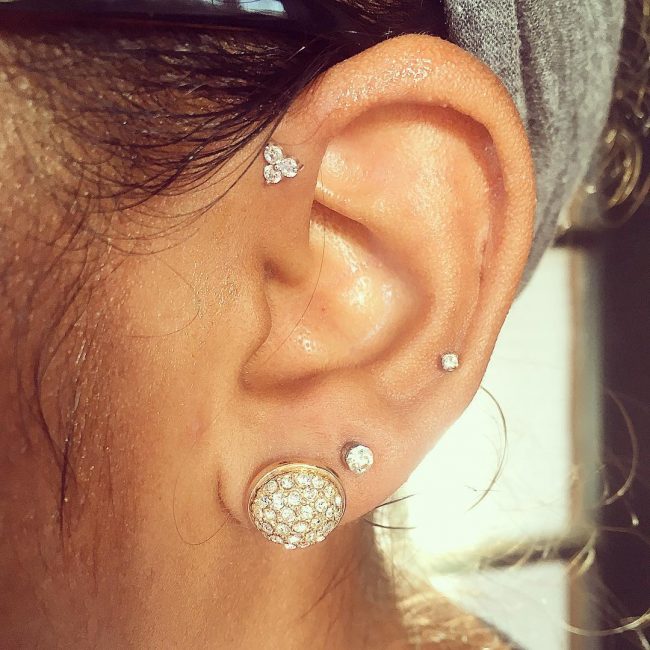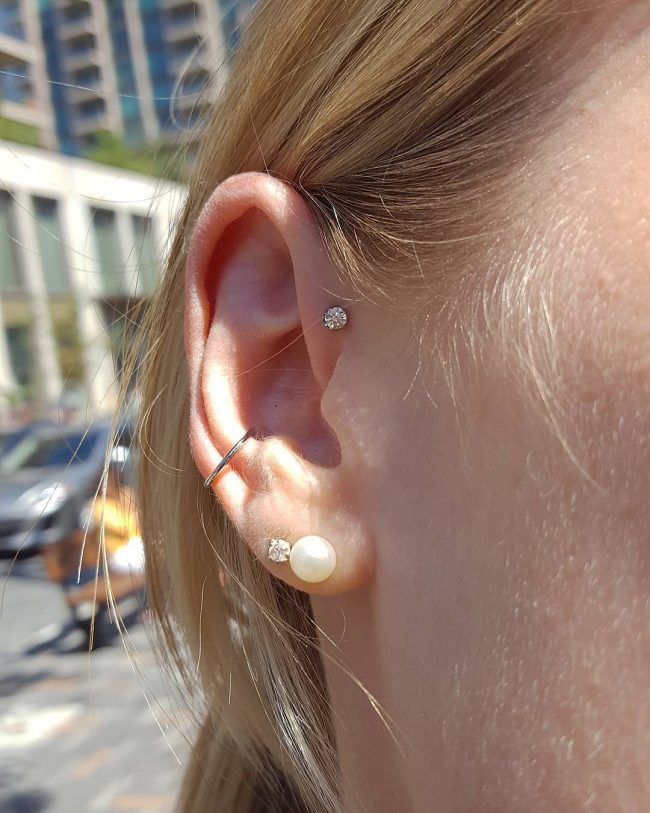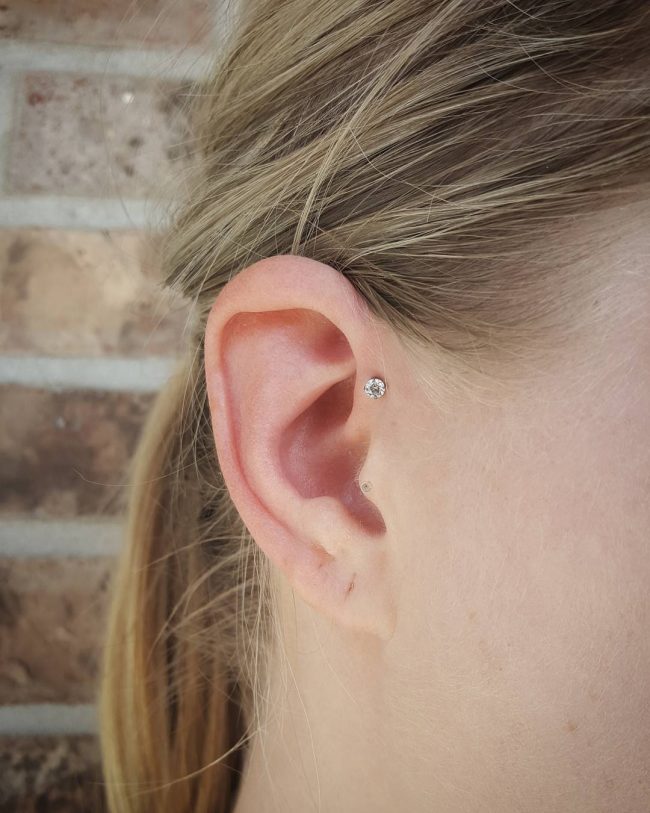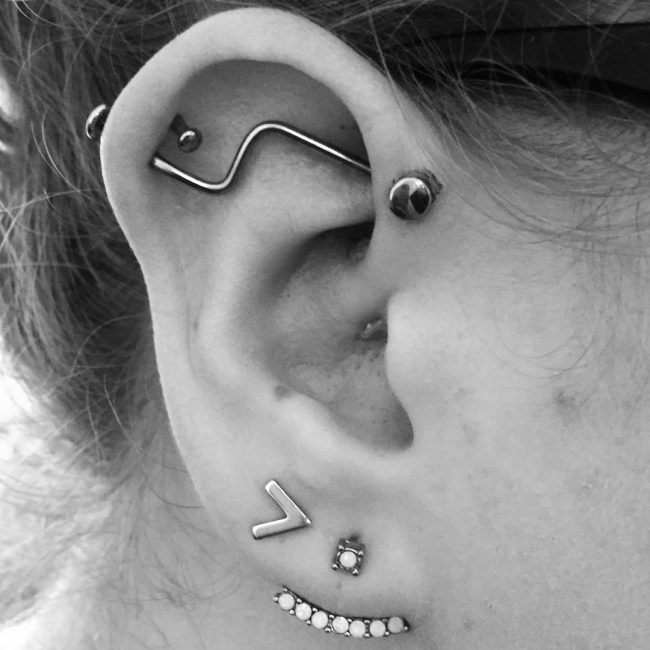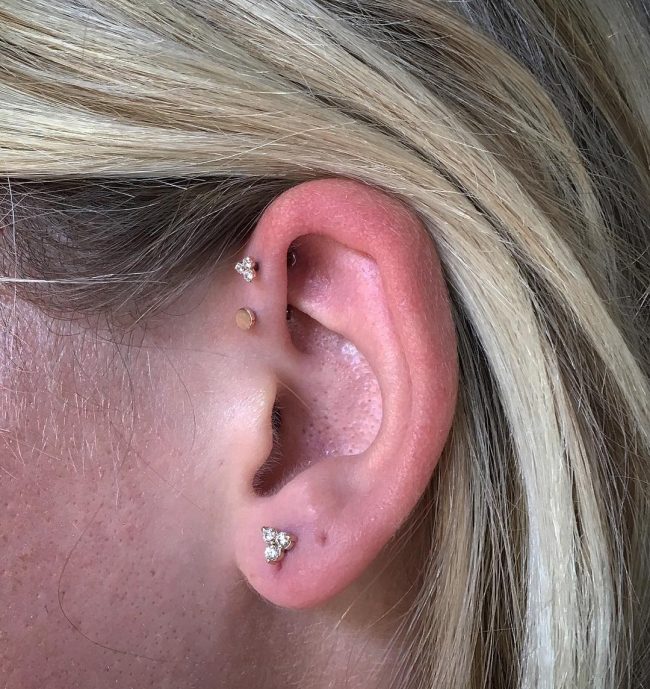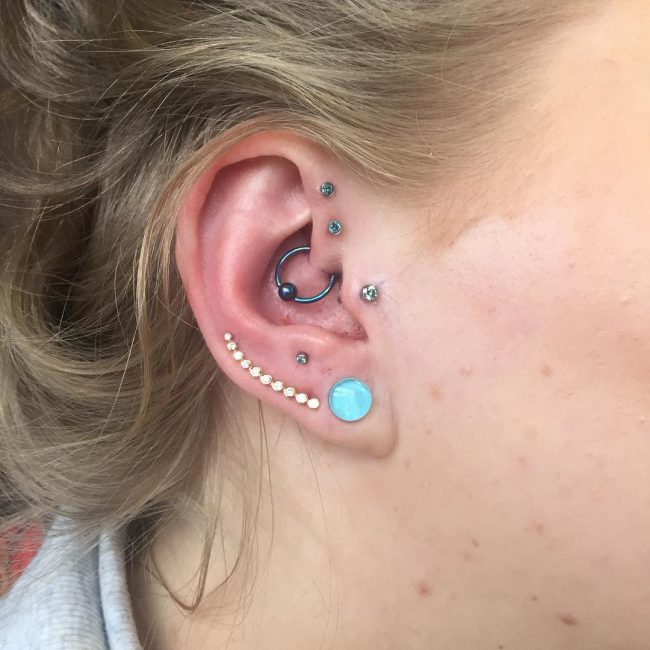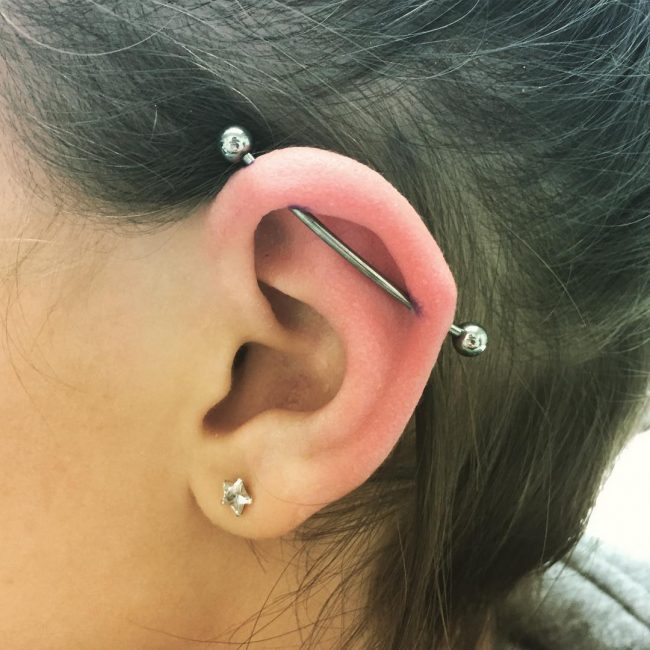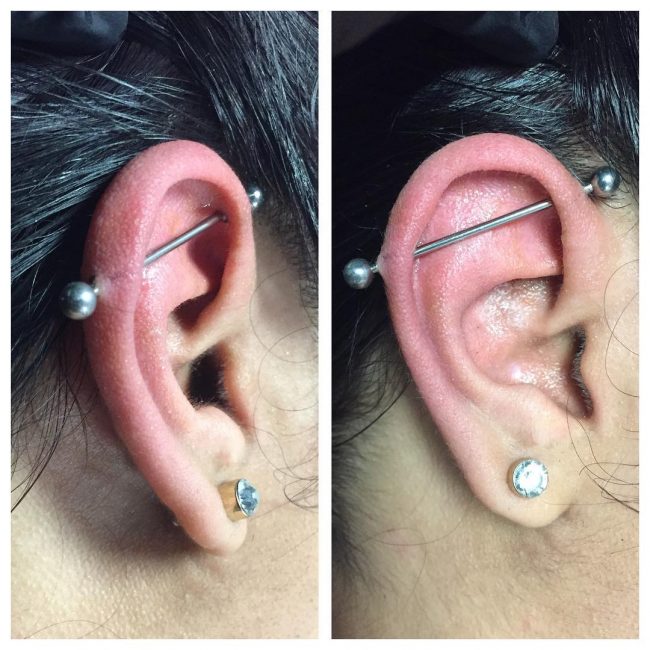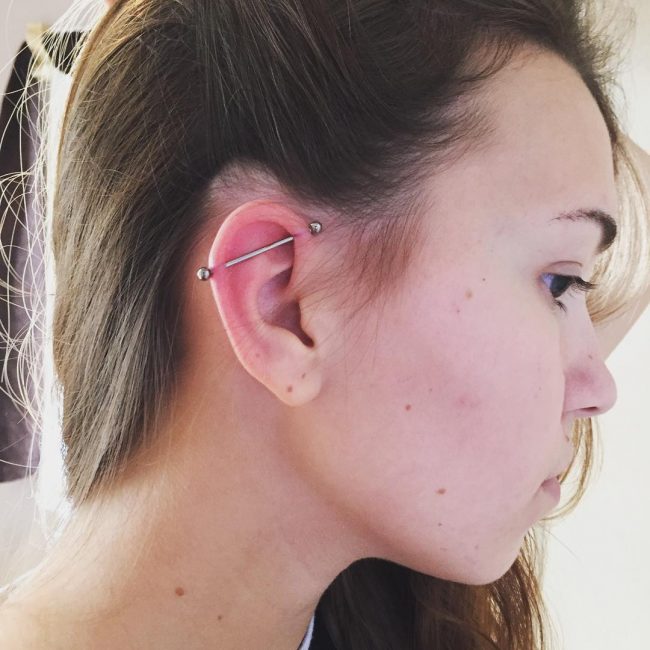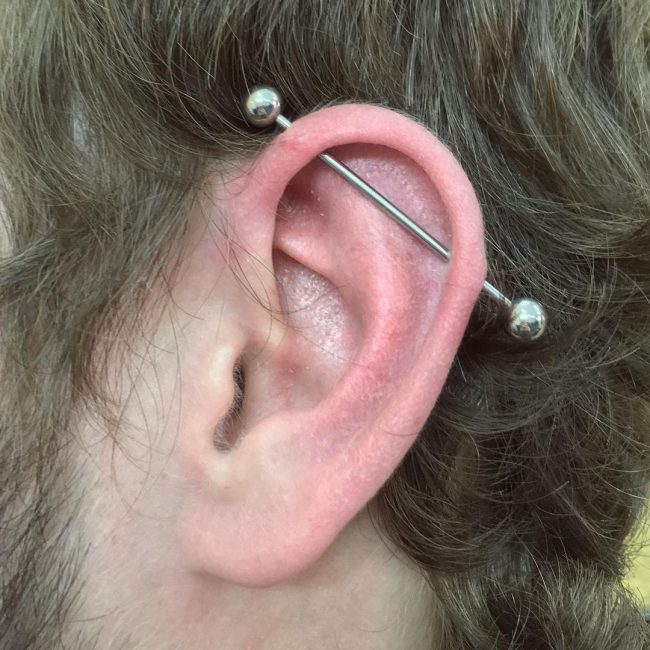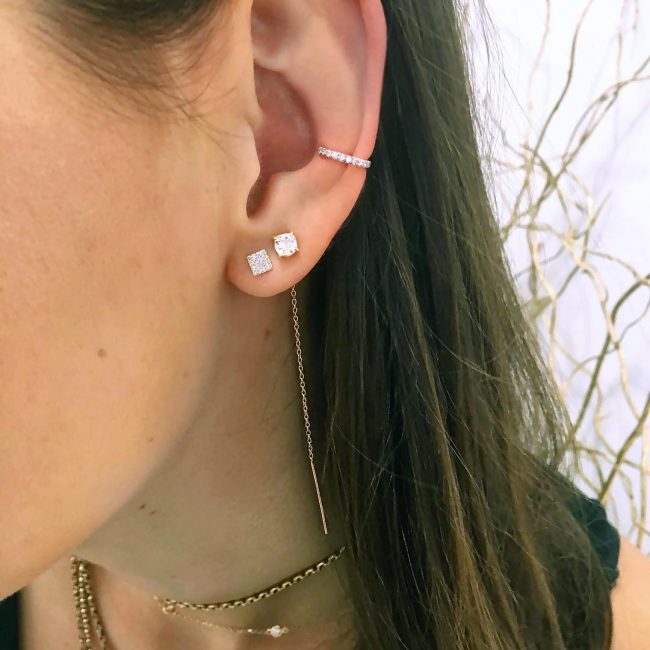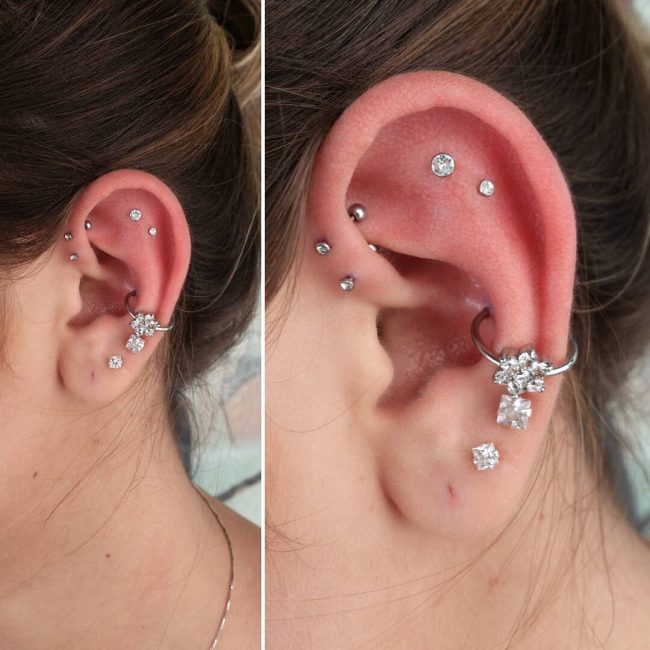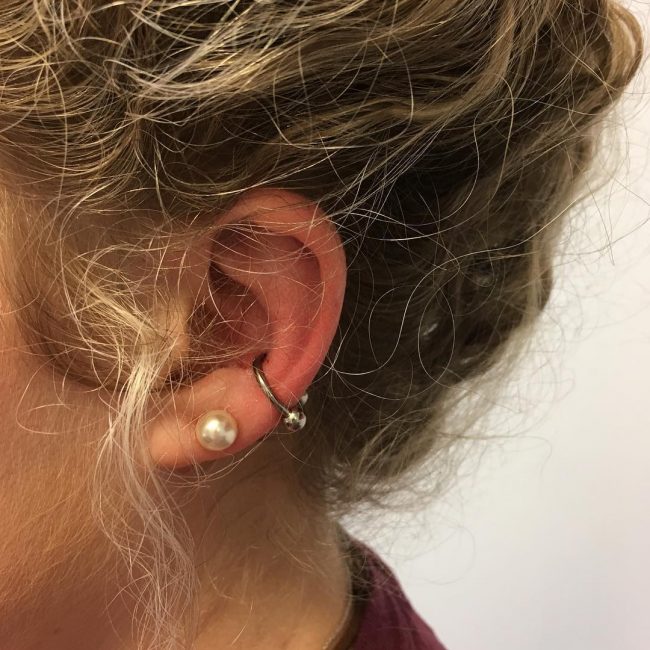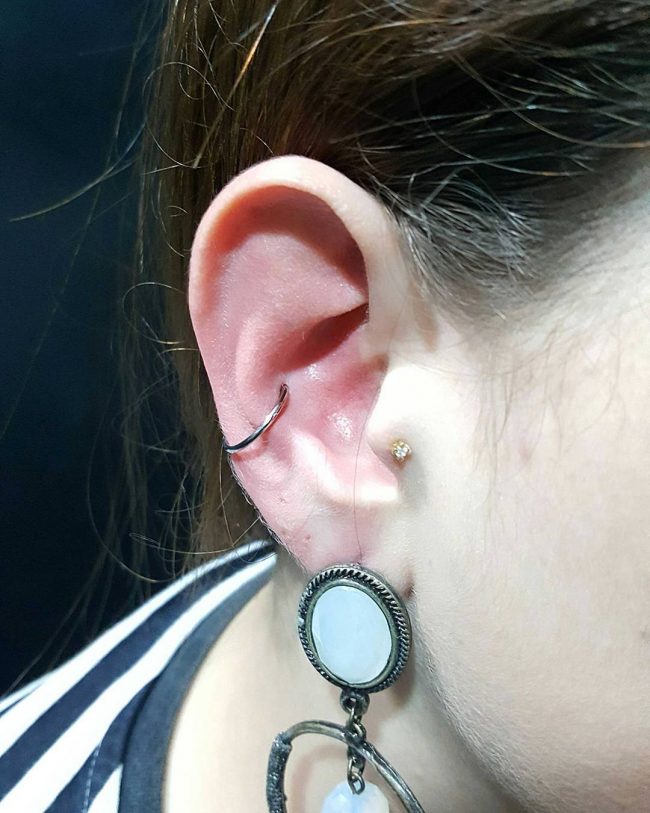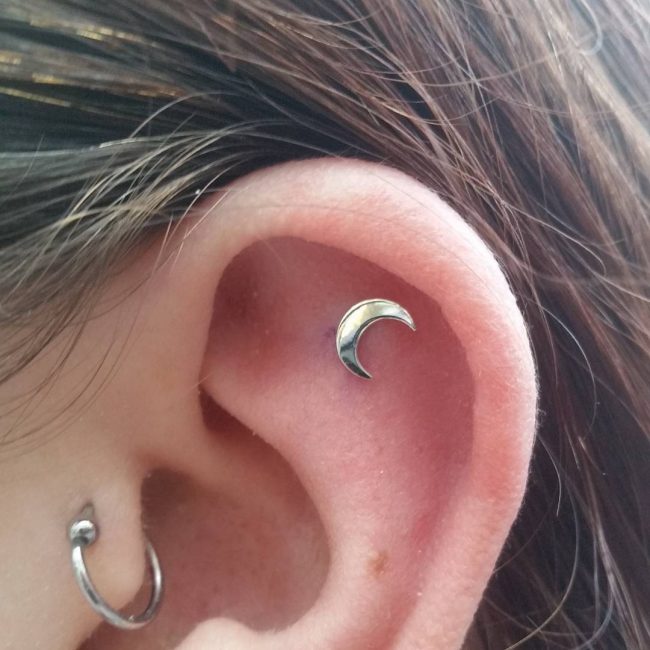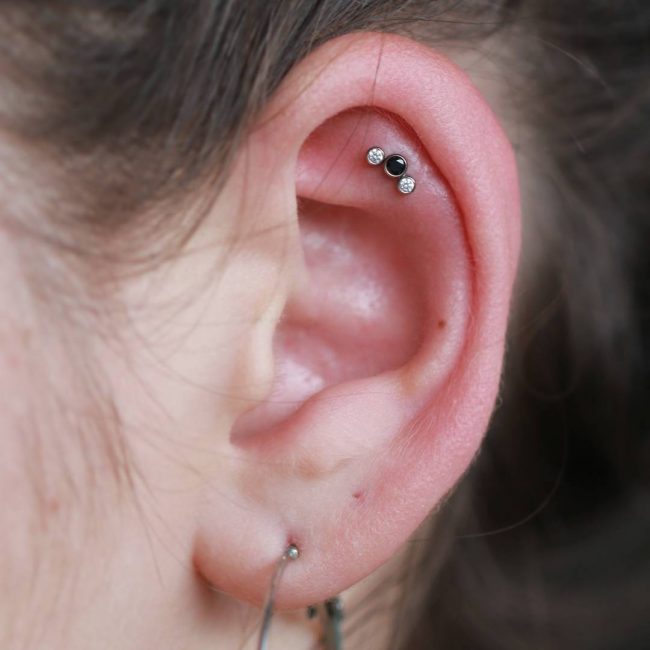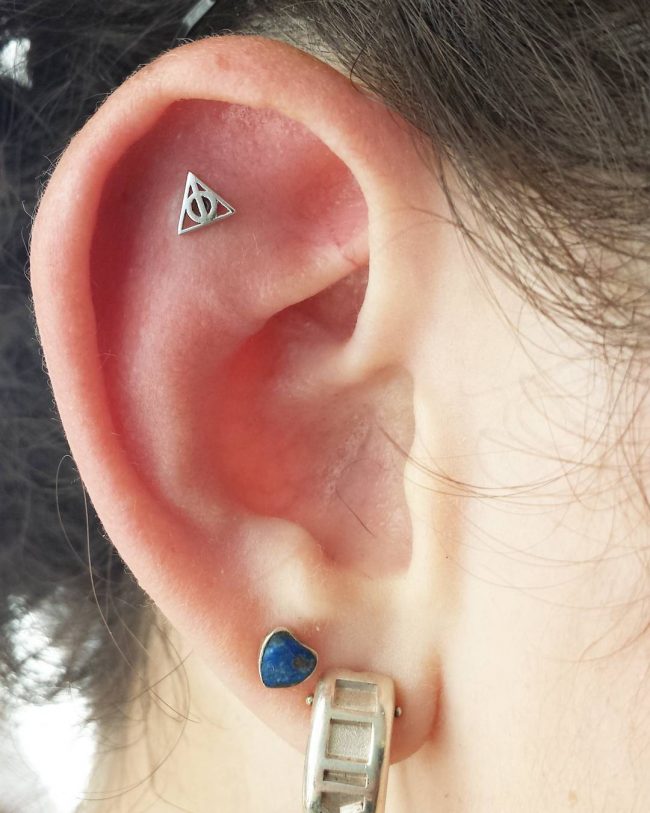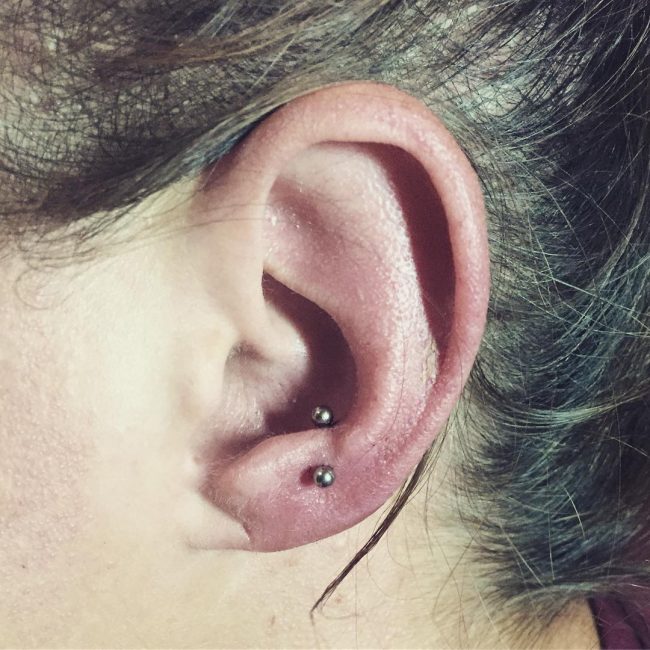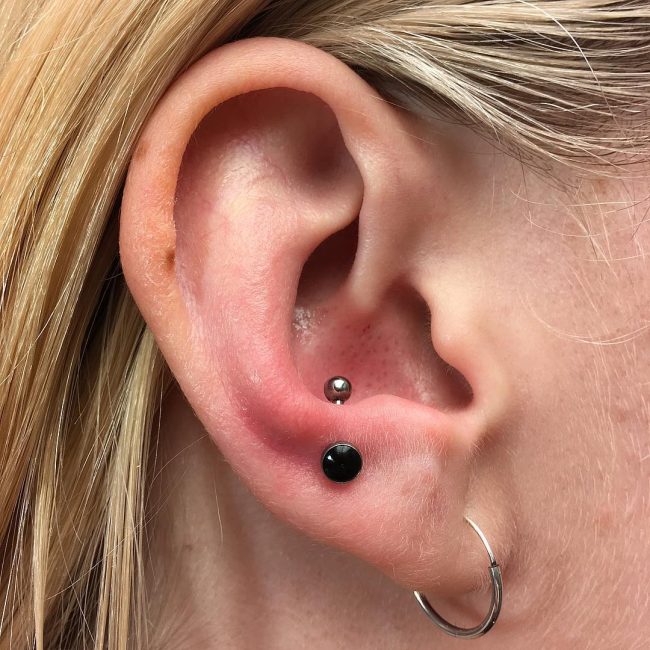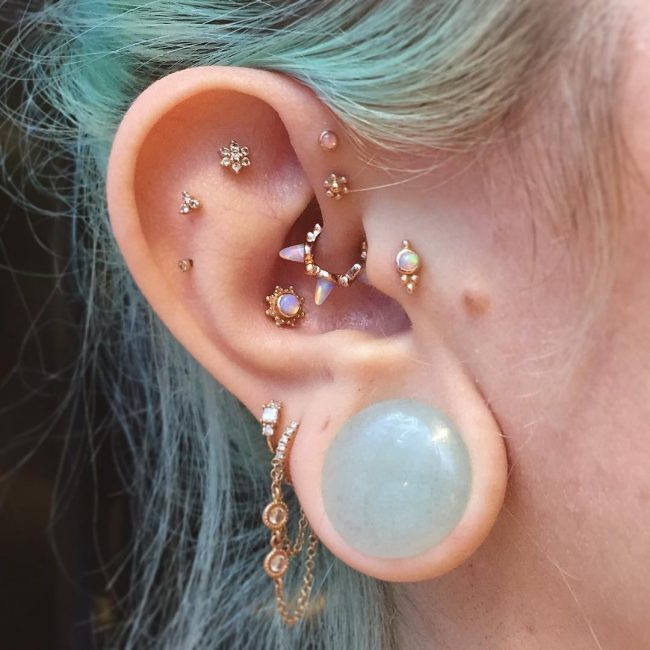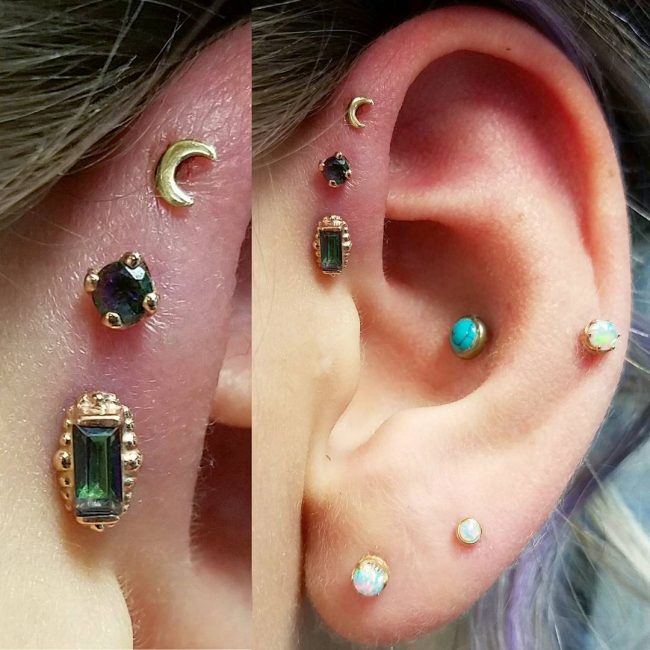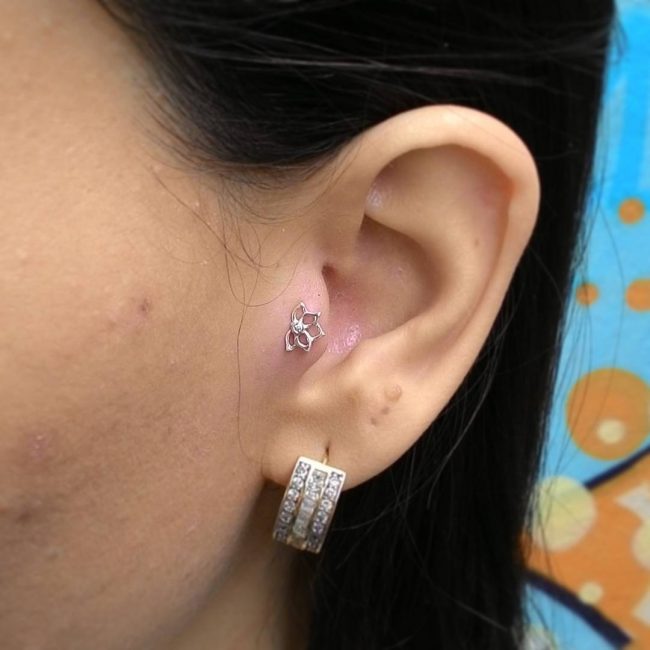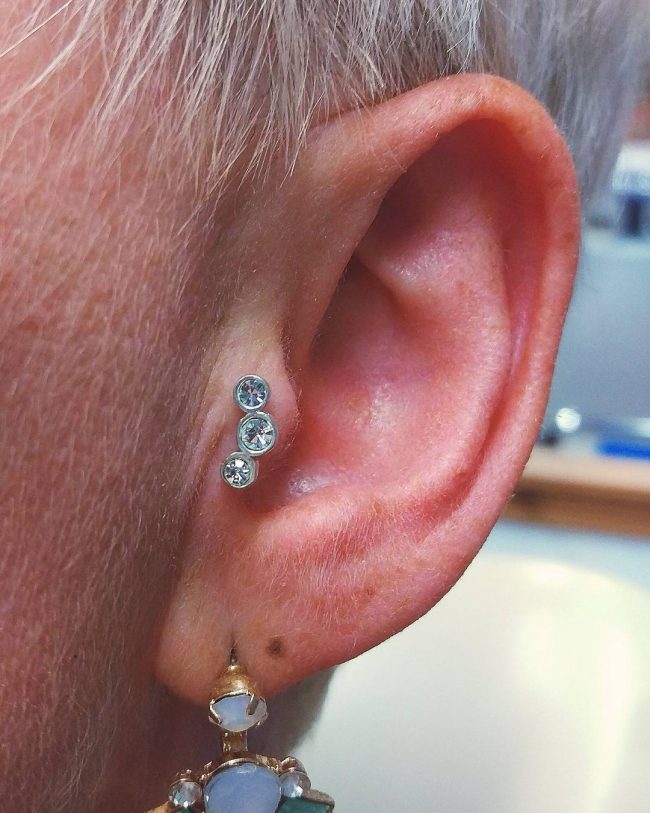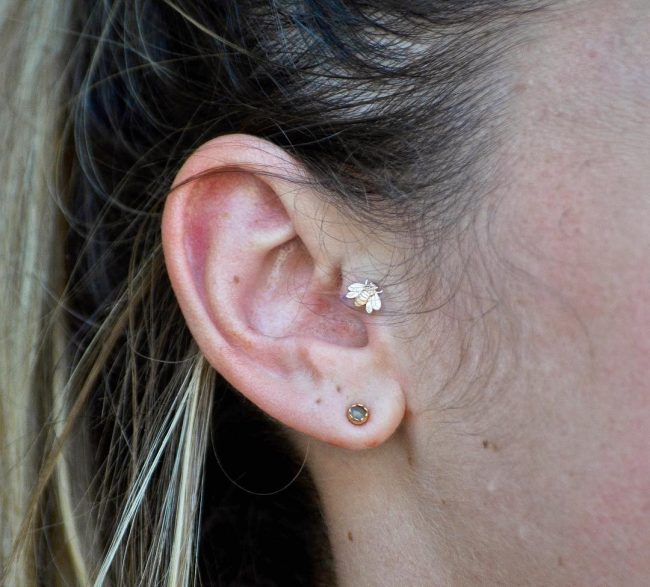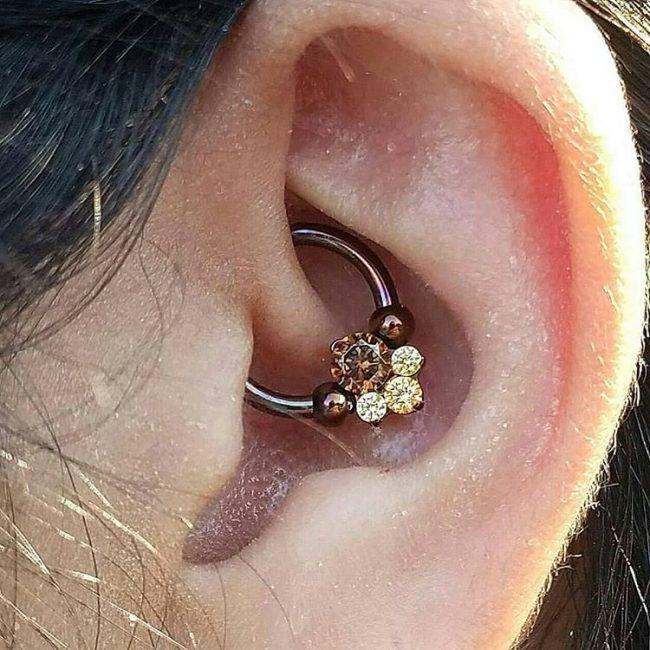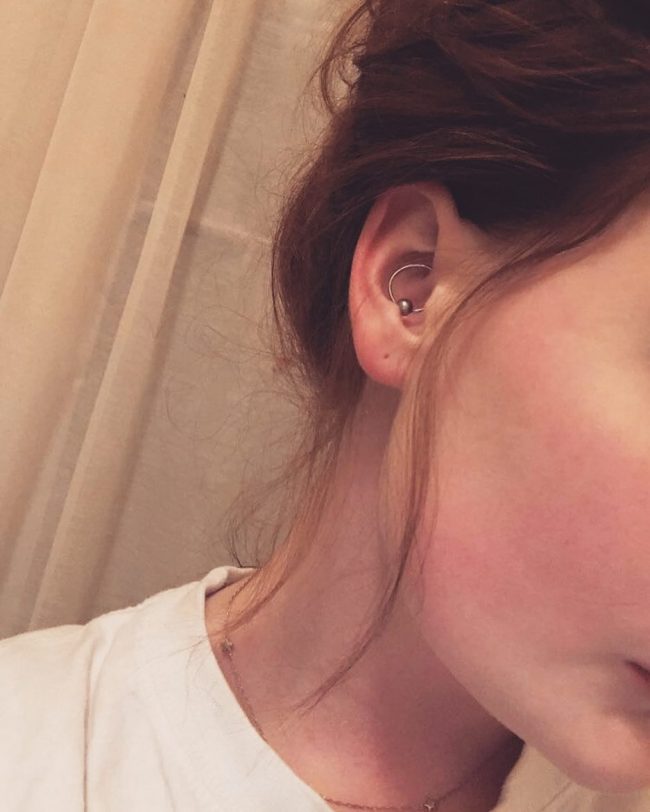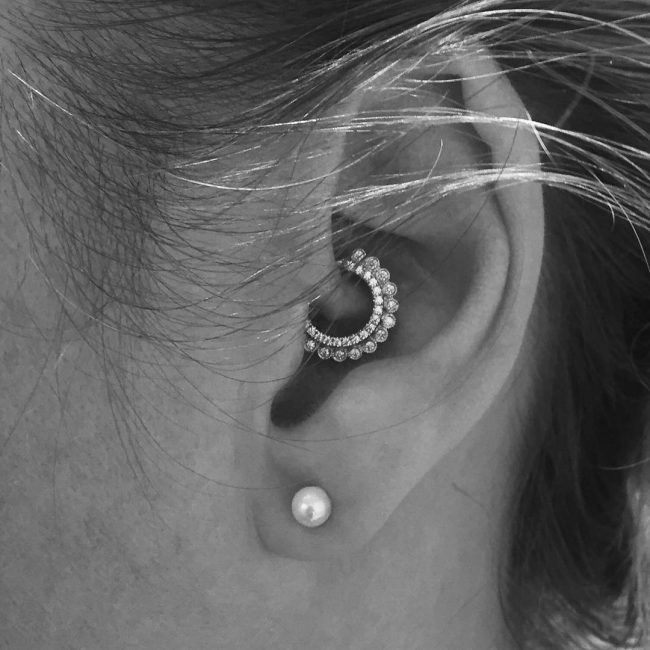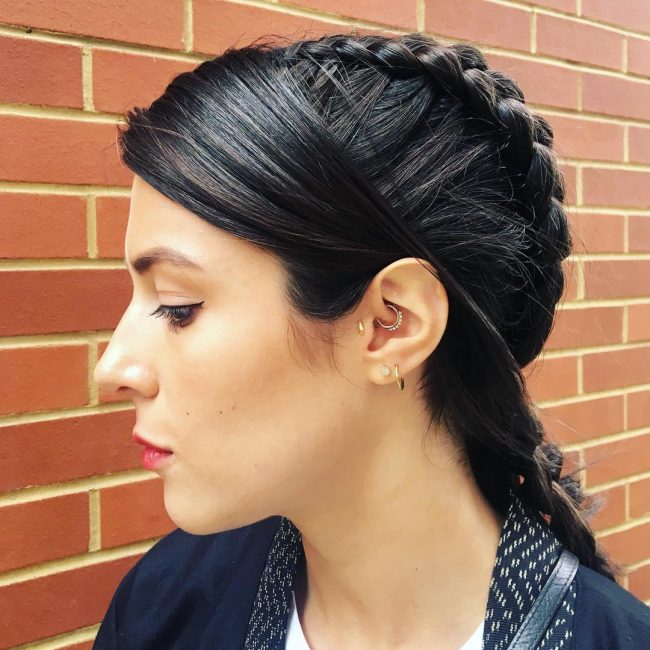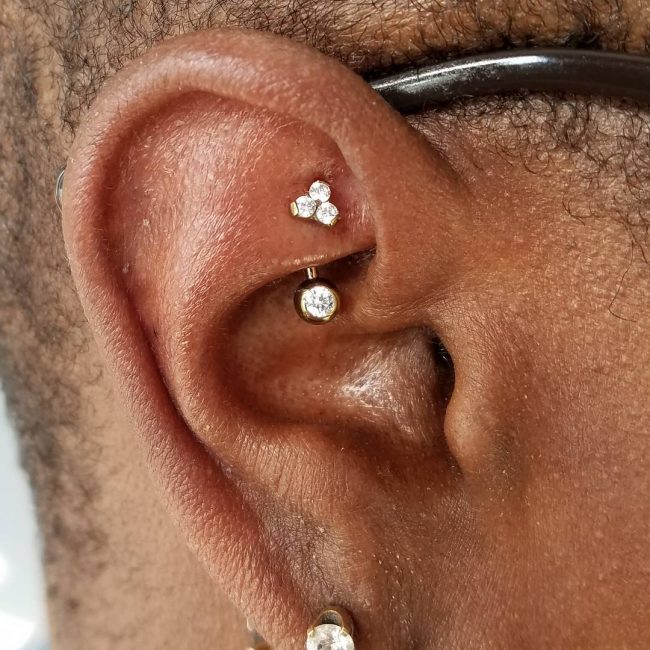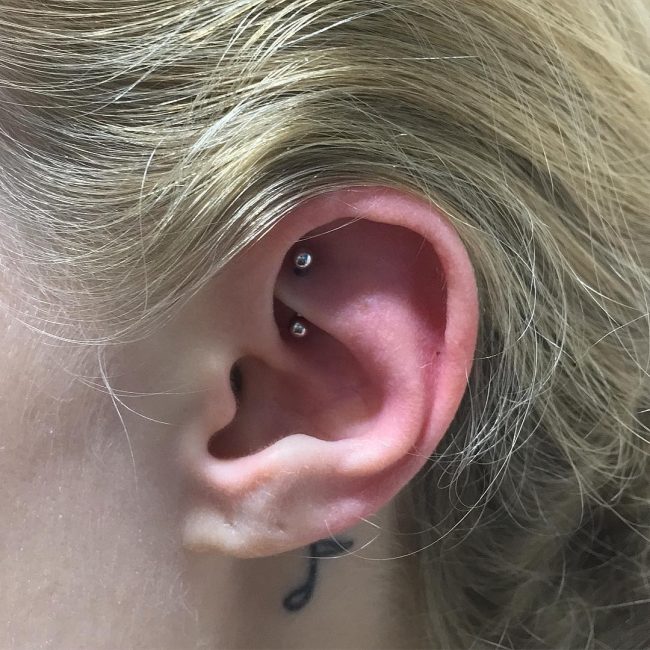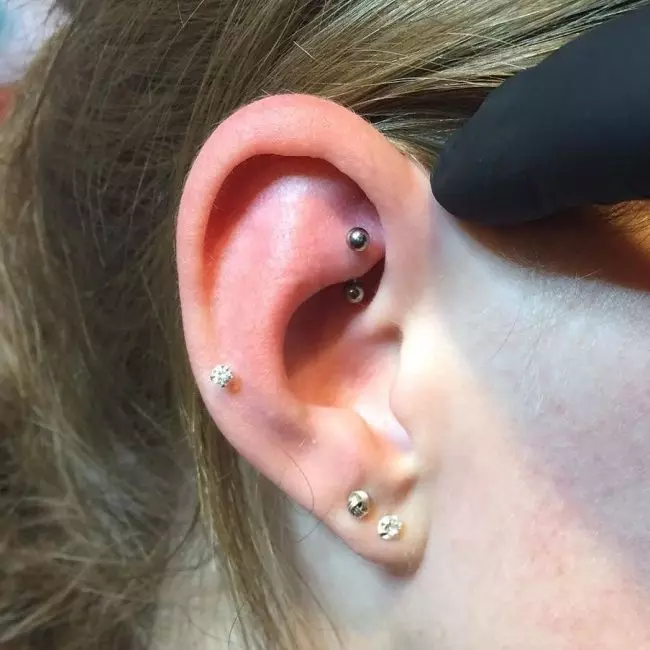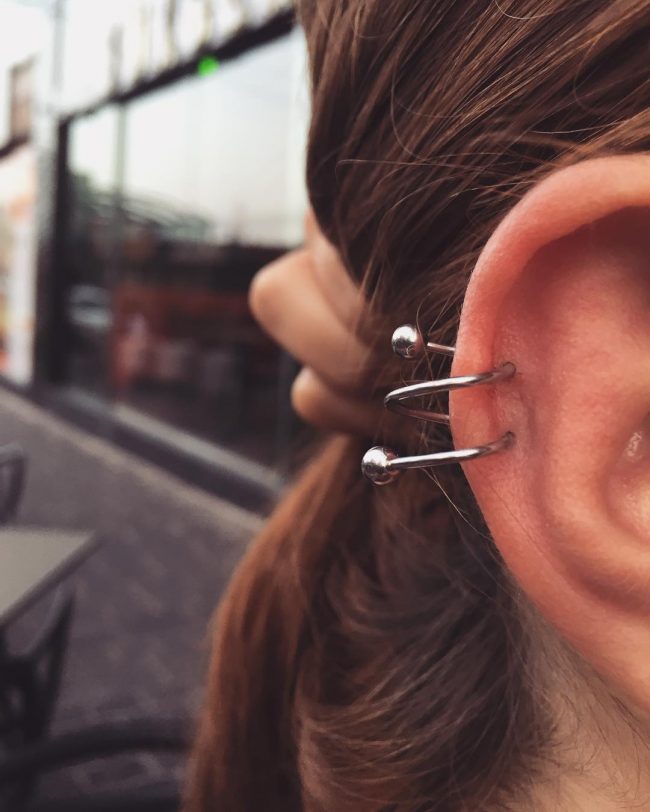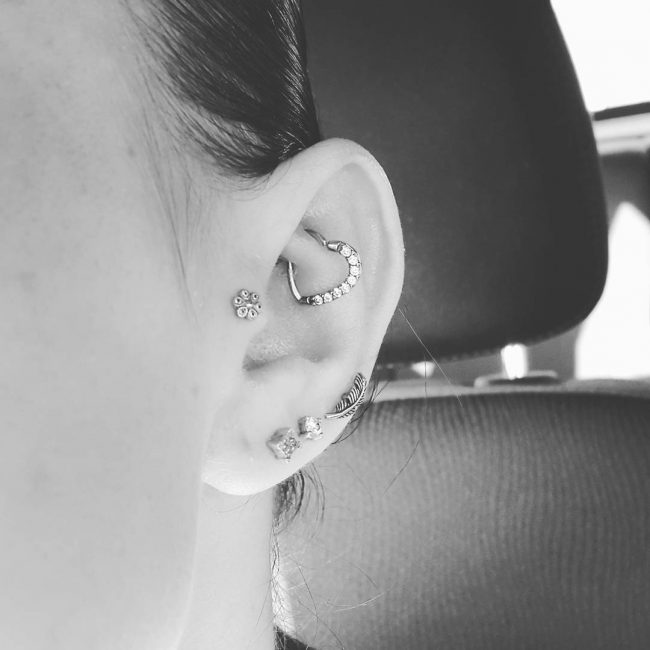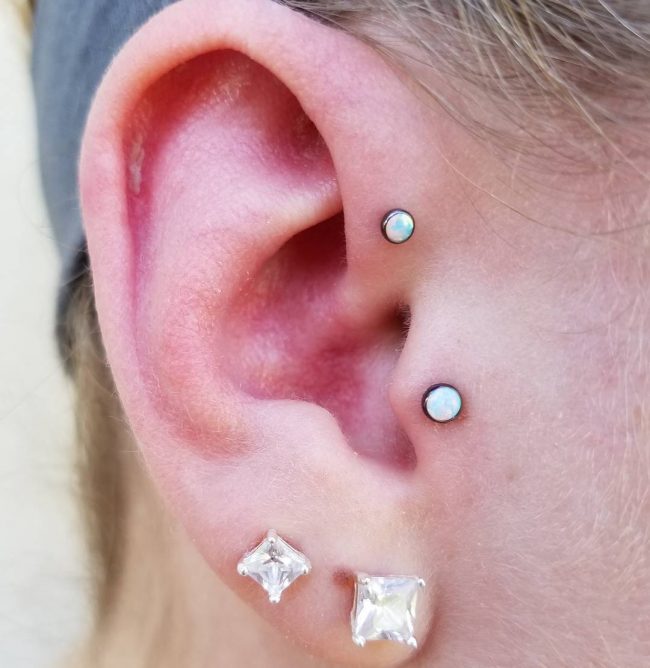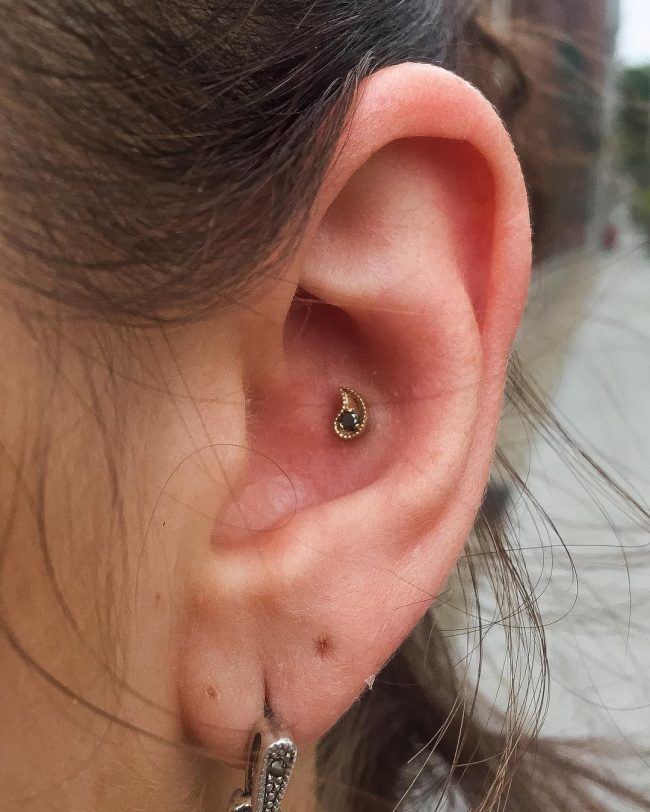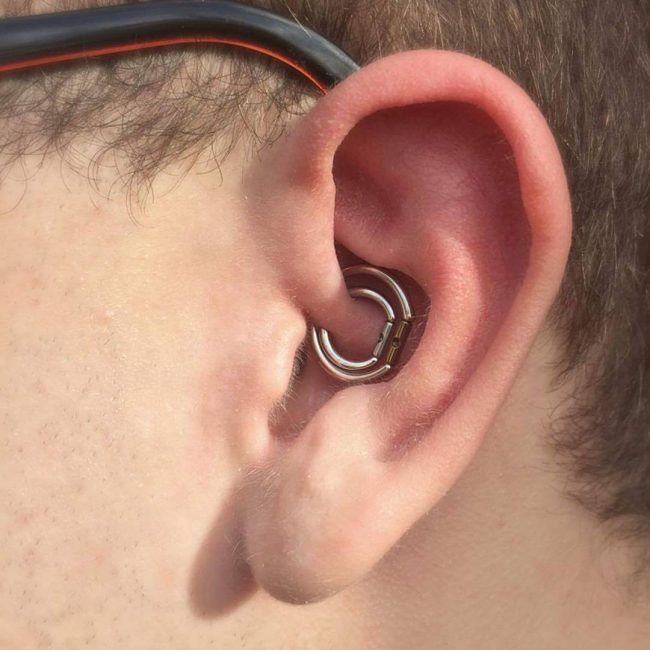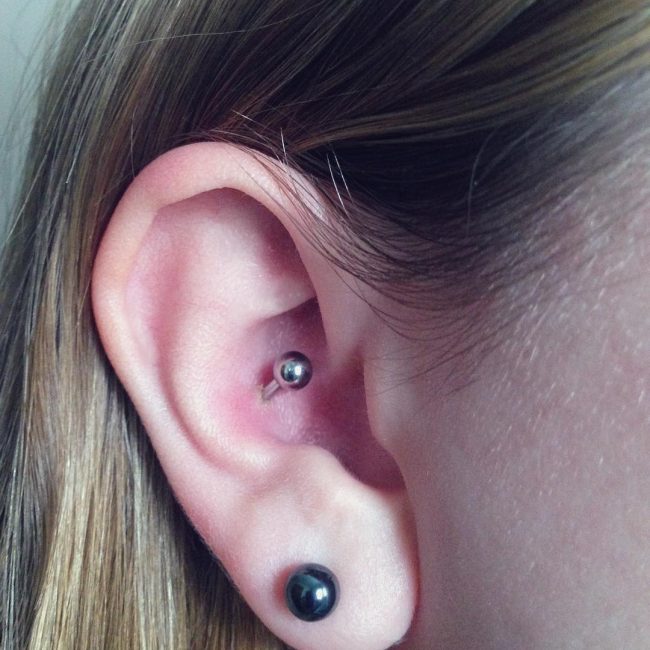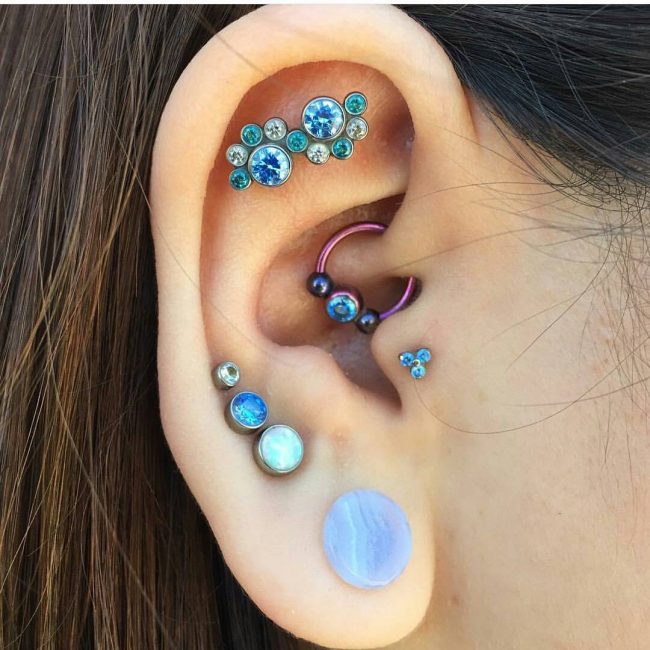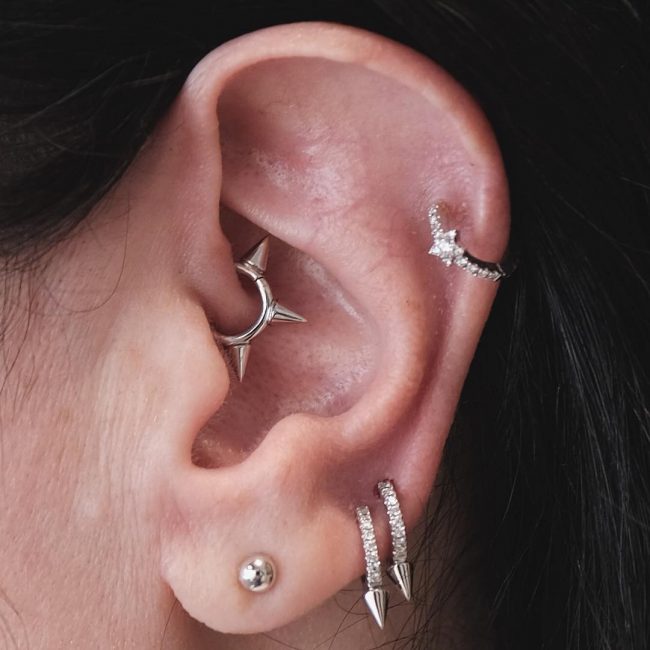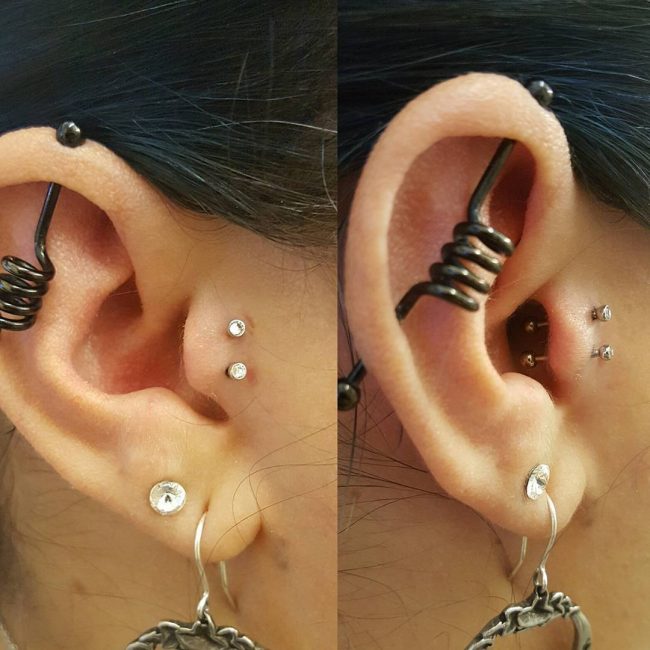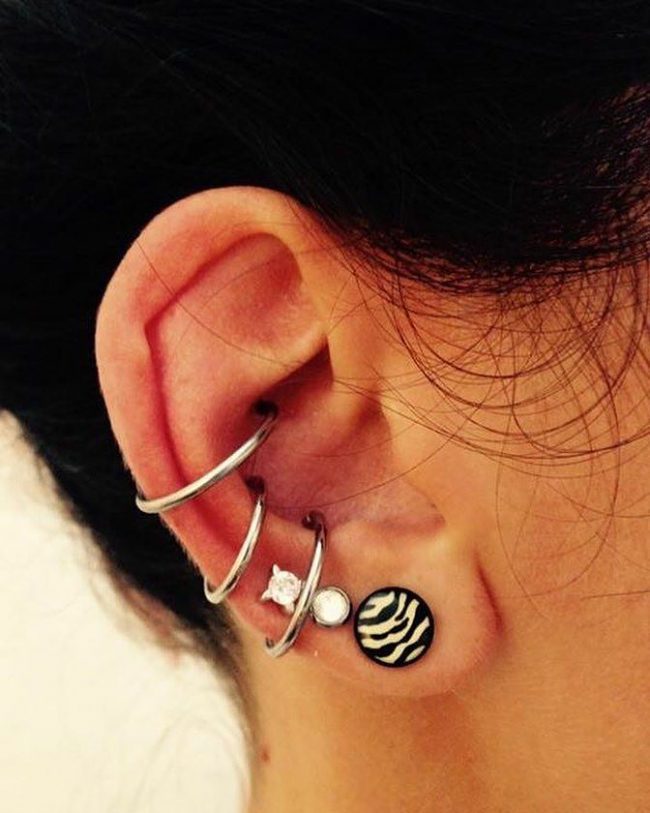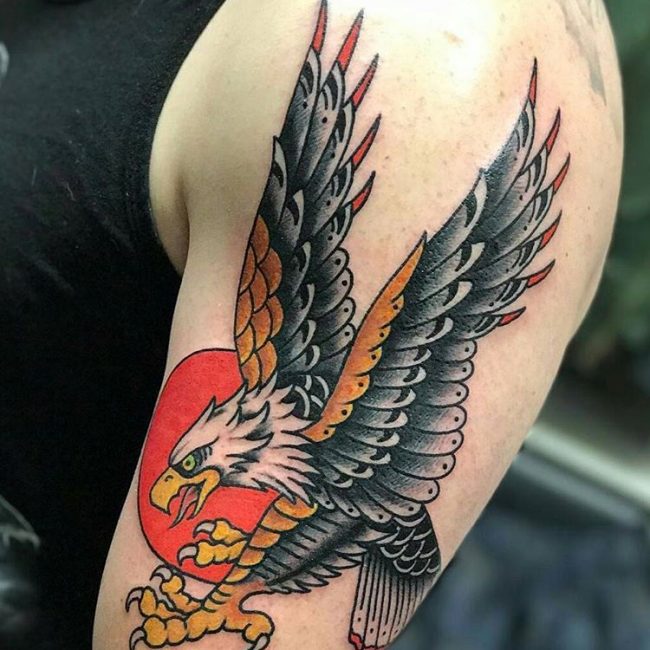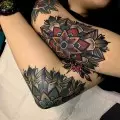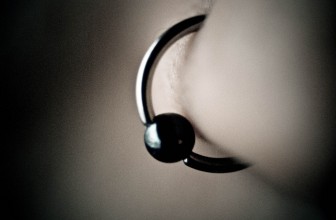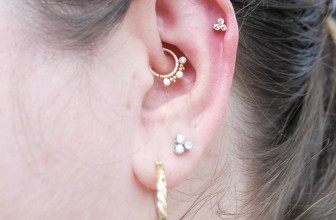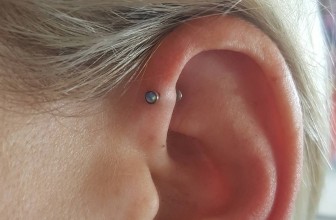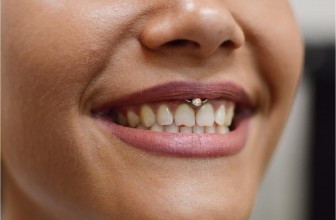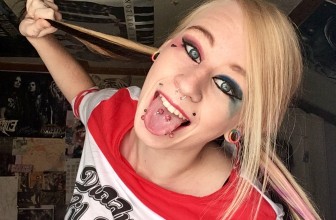60 Trendy Types of Ear Piercings and Combinations – Choose Your Look!
Getting a piercing can be a little bit nerve-racking – everyone is concerned about the pain and about how it will look.
But the reality is that if you choose a professional artist ear piercings are not usually intensely painful (although they take a little time to heal) and they are a great accessory for any outfit – especially with all the jewelry that is available!
If you are having a hard time choosing we have rounded up all the most popular types of ear piercings for you to see before you make a choice.
Contents:
Earlobe
The most commonly requested ear piercing is done on the soft portion of the earlobe. This is the most mainstream piercing and usually takes about ten weeks to heal.
A variation of this style is the upper earlobe piercing which sits just slightly higher up. Usually, if the upper earlobe is pierced the lower one will be as well. If properly cared for there is minimum pain associated with this piercing.
back to menu ↑Graduate Lobe Piercing
When you’ve done your lower and upper lobe and you just want to continue you could go for a graduate lobe piercing. This refers to a combination of three (or more!) piercings done on the earlobe at small intervals on top of each other.
These will take about the same amount of time to heal as the regular earlobe piercings.
back to menu ↑Transverse Lobe
The transverse lobe piercing is a step up from the regular earlobe piercing. For this style, the lobe is pierced horizontally using a barbell. The angle varies from person to person and will depend on the size and shape of the ear.
This shape will also determine the type of jewelry that can be worn – either a straight barbell or a curved one. This will take just slightly longer than a normal earlobe piercing to heal – about twelve weeks.
back to menu ↑Auricle Piercing
Moving up the ear, next we come to the auricle. This is the outer portion of the ear just between the earlobe and the helix i.e. the middle part of the outer ear rim.
This area is packed with nerve endings so it will be painful but totally worth it – it looks great with silver or black rings and you could have more than one. This can heal as quickly as twelve weeks, but could take up to nine months in other cases.
back to menu ↑Helix
The helix refers to the upper cartilage of the ear. According to some, this is not a very painful area to piece as there are few nerve endings in this area. You could wear a ring style over the top fold or have a small series of piercings – it’s all up to you.
You may feel some pain as the needle goes through, but this should not last for long. This area does take up to six months to heal properly so you must be committed to continuing with aftercare for quite some time.
It will be worth it though, as this makes a great fashion accessory that you can even wear to work. Just don’t catch your hairbrush in it!
back to menu ↑Triple Helix
A series of three helix piercings is called a triple helix. The jewelry used is usually three captive rings (a ring with a bead that completes the circle and stays in place with tension).
back to menu ↑Anti-Helix
The anti-helix piercing is also sometimes referred to as a snug. In this style the barbell jewelry goes horizontally through the middle of the helix and comes through the front side of the conch (cup-shaped area that looks like a shell next to the ear canal).
This piercing will swell quite a bit and will take up to eight months to fully heal.
back to menu ↑Forward Helix
The forward helix describes a piercing that perforates the helix on the curve closest to the head. This is a delicate looking accessory usually requested by female clients. Multiple pieces of jewelry could also be placed here, usually captive rings.
It will take about four months to heal.
back to menu ↑Industrial
Industrial ear piercing refers to a piercing where two holes are connected by a single piece of jewelry. When this area is pierced the client will usually wear a straight piece of jewelry between each opening.
The two areas usually used are the upper ear cartilage – one close to the head (forward helix) and one lower down on the helix on the opposite side.
Well, most people opt for this horizontal type of industrial piercing others prefer the vertical style (also called suicide industrial) where the jewelry connects with a hole in the forward helix and a hole on the lower portion of the ear.
A really striking look is an industrial piercing that connects three holes in a row – upper, middle, and lower ear.
This one can be a little painful and can also take up to six months to completely heal. This type of piercing is sometimes known as a “the bar” or “construction piercing”.
back to menu ↑Orbital
An orbital is similar to an industrial piercing. It doesn’t refer to a specific placement, but rather is a term used to describe any two or more holes connected by a single piece of jewelry.
There are a number of interesting pieces of jewelry to choose from for this purpose and it’s quite unique. You can probably expect an orbital piercing to take from six months to a year to heal.
back to menu ↑Flat Piercing
A flat piercing is one that is placed on the flat part of the upper helix. The term flat piecing usually describes large gauge piercings and will take up to eight months to be completely healed.
back to menu ↑Conch
This is also known sometimes as an upper lobe piercing. The conch is the cup shaped area that looks like a shell next to the ear canal – between the anti-helix and the daith (ear’s innermost cartilage fold).
It can be placed either in a horizontal or vertical fashion. It will take about four months to heal.
back to menu ↑Tragus
The tragus is the area of the ear that projects outward in front of the ear canal. This is quite a common piercing, but not everyone is able to have this as it also depends on the size of the tragus.
You could wear either a stud, barbell, or ring in this area and you should expect a healing time of approximately four months.
back to menu ↑Daith
This piercing passes through the inner fold of the helix, next to the head. This is the area between the tragus and the rook (fold behind the forward helix and just above conch).
To get an authentic daith the bottom portion of the ring jewelry must seem to come out of the ear canal – i.e. you should not be able to see the entry and exit hole. This looks particularly attractive with a large gauge ring.
This is quite an advanced technique as the area is awkward to reach and requires a skilled artist. You could expect to wait about four to six months for this area to heal.
back to menu ↑Rook
A rook piercing perforates through an area above the conch and daith and behind the forward helix. Artists will usually suggest wearing a curved barbell to heal the area as rings can stick out and get hooked.
For this style, the healing process usually lasts about six months.
back to menu ↑Ear Weaving Piercing
This is another variation of the helix and involves a number of helix piercings – two to three in most cases – connected with a single piece of spiral jewelry. This is a striking look that can take time to heal but will be worth it as it looks really unique!
There a few things to consider when going for an ear piercing. Firstly consider your lifestyle and your workplace and if needed make inquiries as to what body piercing is allowed.
Most workplaces do have dress code policies, but are generally okay with most types of ear piercings.
Secondly, you need to find a reputable artist who is qualified to do piercings. Infections can be spread through dirty needles and instruments so take care with this step as you don’t want to get infections.
Lastly, getting the piercing is just the first step – afterward, you will need to care for your new body jewelry. Depending on the type of piercing you decide on this can take anywhere from a few months up to a year to heal fully.
During this time you need to follow the aftercare instructions provided by the artist. This will probably include daily cleaning with cotton wool and a saline solution and taking precautions not to get other products like perfume or hairspray on the area.
It’s also suggested that you change your bedding regularly and do not sleep on the newly pierced ear (so don’t get both done at the same time!) People used to believe that to help the area heal you need to turn the jewelry but this is incorrect.
Doing this tears the newly healed skin and can contribute to rejection and infection.
Once your piercing is healed, then the fun begins because there are amazing pieces of jewelry available so you can change your look according to your mood and outfit – enjoy it!

